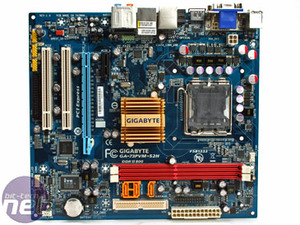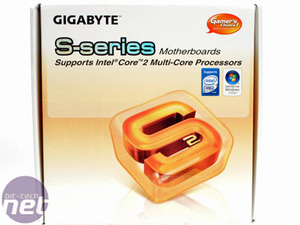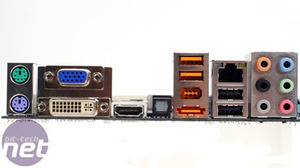Home Theatre PC Motherboard Shootout
February 5, 2008 | 11:55

Gigabyte GA-73PVM-S2H
Chipset: Nvidia GeForce 7100Manufacturer: Gigabyte
UK Price (as reviewed): £46.98 (inc. VAT)
US Price (as reviewed): $78.00 (inc. VAT)
We looked at the AMD version of the Nvidia GeForce 7050PV chipset last year thanks to Biostar and while the GeForce 7150 sounds better, if you compare the features here and here, there is literally no difference. In fact, the GeForce 7100 is almost identical to the GeForce 7150 except for a slightly faster IGP core clock. What is missing from both GeForce 7100 and 7150 is the PureVideo engine – only the GeForce 7050PV includes it and can only be bought on the AMD platform, which kinda sucks, in our opinion.
What the GeForce 7100 (and 7150) do offer are an upgrade from the GeForce 7050 in terms of 1,333MHz FSB CPU support and faster 800MHz DDR2 support as well as a much faster IGP clock (600MHz versus 425MHz). In some respects, the Nvidia solution is light years ahead of what Intel offers: it not only integrates both north and south bridges into a single die (hence the two names: GeForce 7100/nForce 630i) but the single die is actually smaller than just the Intel north bridge.
It's also very low power, it has proper driver support, it’s cheaper and it has digital video out from DVI and HDMI without the need for a TDMS chip. We’re talking win, win, win, win... win and win. The only (albeit serious) downside is that lack of PureVideo support.
- Intel Core 2 Quad, Duo, Extreme and Pentium 4 and D CPU support – 800MHz, 1,066MHz and 1,333MHz front side bus.
- Nvidia GeForce 7100 and nForce 630i in a single chipset
- Dual channel memory with up to 4GB DDR2 800MHz from two DIMM sockets
- Nvidia GeForce 7100 graphics with DirectX 9.0c support, HDMI, single-link DVI-D and VGA (dual output capable, but not DVI and HDMI)
- One PCI Express x16 1.1 slot
- One PCI Express x1 1.1 slots
- Two PCI slots
- Three SATA and one eSATA 3Gbps ports with RAID 0, 1, 0+1 and 5
- Realtek RTL8211B PHY Gigabit Ethernet controller
- Realtek ALC889a 7.1 channel premium High-Definition audio codec with DTS connect
- Texas Instruments TSB43AB23 IEEE1394a Firewire controller with two ports
- 10 USB 2.0 ports
- Gigabyte features: Virtual Dual BIOS, Xpress Recovery2, Q-Flash, @BIOS and EasyTune
Comparatively the board looks pretty bare compared to the Asus, but we feel it still has enough features to make it applicable to the price and user target – not everyone needs lots of SATA ports, and there is even eSATA included which will help those with small cases who want to expand. One could argue that SATA optical drives take ports away, but obscenely large hard drives are ten-a-penny nowadays so it all balances out.
The two DDR2 slots will also be limiting to some – it means you can’t easily upgrade at a later date without replacing a pair of modules. However, pairs of 4GB DDR2 are coming down in price all the time, although we’ve found 2GB or even 1GB more than capable of running Windows Vista’s built-in media centre functionality.
Gigabyte uses Realtek’s ALC889a codec, which is basically a rebranded ALC885 that offers a higher potential signal to noise ratio than most other integrated solutions—certainly the ALC883 on the Asus—and it even has DTS Connect (under the Virtual Surround option in the sound settings) to expand stereo audio into multichannel sound – this is unavailable for HDMI audio however. In all, for a board of this price, this is an excellent feature set should you need it.
The single heatsink is very small and passively cools the only chipset – for a change Nvidia has something that doesn’t require some serious metal to keep it cool. Power regulation is pretty good – four phase for CPU and one phase for memory and chipset, and while the CPU area gets solid capacitors the rest of the board doesn’t.
Gigabyte includes two legacy PCI slots to one PCI-Express which is a good idea given the and the PCI-Express x16 slot still offers the power of a discrete card, however this chipset will not support Hybrid SLI. The rear I/O is also pretty fully featured which is unusual given the cost – Gigabyte manages to cram at least one of everything in including optical S/PDIF, six 3.5mm audio jacks, four USB, Gigabit Ethernet, eSATA, a 6-pin Firewire, HDMI, DVI, VGA and PS2 ports.

MSI MPG Velox 100R Chassis Review
October 14 2021 | 15:04












Want to comment? Please log in.